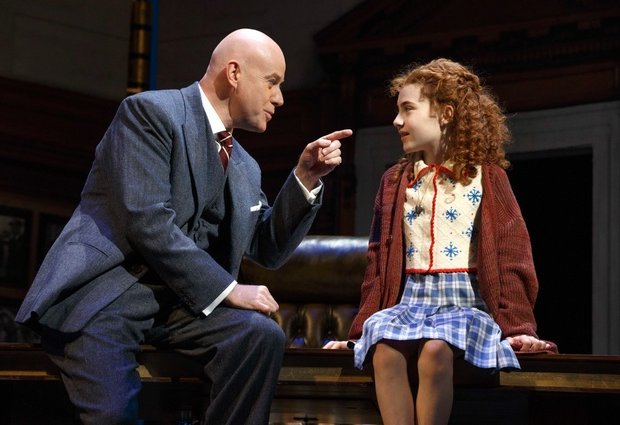“In the light of what has been said about persuasion-by-association and the enhancement of emotions by subliminal suggestion, let us try to imagine what the political meeting of tomorrow will be like. The candidate (if there is still a question of candidates), or the appointed representative of the ruling oligarchy, will make his speech for all to hear. Meanwhile the tachistoscopes, the whispering and squeaking machines, the projectors of images so dim that only the subconscious mind can respond to them, will be reinforcing what he says by systematically associating the man and his cause with positively charged words and hallowed images, and by strobonically injecting negatively charged words and odious symbols whenever he mentions the enemies of the State or the Party. In the United States brief flashes of Abraham Lincoln and the words ‘government by the people’ will be projected upon the rostrum. In Russia the speaker will, of course, be associated with glimpses of Lenin, with the words ‘people’s democracy,’ with the prophetic beard of Father Marx. Because all this is still safely in the future, we can afford to smile. Ten or twenty years from now, it will probably seem a good deal less amusing. For what is now merely science fiction will have become everyday political fact.”
Aldous Huxley, Brave New World Revisited
Archives for November 2012
TT: Just because
Ray Bradbury appears as a contestant in a 1955 episode of Groucho Marx’s You Bet Your Life:
(This is the latest in a series of arts-related videos that appear in this space each Monday and Wednesday.)
TT: Almanac
“The translator, let me suggest in passing, must never be frightened of the word ‘paraphrase’; it is a bogey of the half-educated. As I have already tried to point out, it is almost impossible to translate a sentence without paraphrasing; it is a paraphrase when you translate ‘Comment vous portez-vous?’ by ‘How are you?'”
Ronald Knox, On Englishing the Bible
TT: James Lapine, alchemist
I review the new Broadway revival of Annie in today’s Wall Street Journal. Very much to my surprise, I loved it. Here’s an excerpt.
* * *
 Annie is dead–but “Annie” lives. Two years after Harold Gray’s long-running comic strip about a plucky orphan child finally breathed its last, the perennially popular 1976 stage version of “Little Orphan Annie” is back on Broadway for the third time. For anyone surprised that the musical responsible for inflicting “Tomorrow” on the world has proved to have that kind of staying power, here’s an even bigger surprise: This revival of “Annie” is fabulous. Creatively staged by James Lapine, Stephen Sondheim’s longtime collaborator, and smartly cast from top to bottom, it makes a convincing case for a musical widely regarded by cynical adults as suitable only for consumption by the very, very young. Even if you’re a child-hating curmudgeon, you’ll come home grinning in spite of yourself.
Annie is dead–but “Annie” lives. Two years after Harold Gray’s long-running comic strip about a plucky orphan child finally breathed its last, the perennially popular 1976 stage version of “Little Orphan Annie” is back on Broadway for the third time. For anyone surprised that the musical responsible for inflicting “Tomorrow” on the world has proved to have that kind of staying power, here’s an even bigger surprise: This revival of “Annie” is fabulous. Creatively staged by James Lapine, Stephen Sondheim’s longtime collaborator, and smartly cast from top to bottom, it makes a convincing case for a musical widely regarded by cynical adults as suitable only for consumption by the very, very young. Even if you’re a child-hating curmudgeon, you’ll come home grinning in spite of yourself.
What makes this “Annie” so special is that Mr. Lapine, who claims never to have seen the show prior to directing this production, decided to approach it not as an exercise in neon-lit nostalgia but as a hard-headed fable about life in the Great Depression. His Annie (Lilla Crawford) has a side-of-the-mouth Brooklyn-style accent, while Miss Hannigan (Katie Finneran), who runs the orphanage-sweatshop on whose doorstep Annie’s parents left her, is a nasty, drunken slut. And while the second act remains relentlessly optimistic–it couldn’t very well be anything else–Mr. Lapine has also succeeded in endowing the relationship between Annie and Daddy Warbucks (Anthony Warlow), the tough-guy tycoon who adopts her, with wholly credible emotion.
That last twist is the most striking aspect of Mr. Lapine’s staging, and his stars deserve great credit for bringing it to fruition. The eleven-year-old Ms. Crawford’s voice is (if I may resort to euphemism) penetrating, but she has more than enough acting talent to compensate for the undeniable fact that she sings REALLY LOUD. As for Mr. Warlow, an Australian musical-theater performer with extensive operatic experience, he’s destined for stage stardom. Not only does he sing “Something Was Missing,” his solo number, with bewitching finesse–vocal connoisseurs will be dazzled by his skillful use of head voice–but he acts as well as he sings….
* * *
Read the whole thing here.
An interview with James Lapine and Andy Blankenbuehler, the director and choreographer of Annie:
TT: Keeping it personal
In today’s Wall Street Journal “Sightings” column I look at how artists respond to great public events like Hurricane Sandy–and how amateurs sometimes do a better job. Here’s an excerpt.
* * *
Here’s a safe bet: The e-mailboxes of every editor at every publishing house in Manhattan are filling up with proposals for novels about Hurricane Sandy. And here’s a safer one: If any of them actually get written, they’ll be awful.
 Artists of all kinds have a weakness for Big Statements. But few of them are equal to a challenge the size of Sandy, which laid waste to much of the eastern seaboard. Consider the art created in response to 9/11. Was any of it good? Truth to tell, just about all of it is already forgotten, and rightly so. Novelist Jonathan Safran Foer’s “Extremely Loud and Incredibly Close,” classical composer John Adams’ “On the Transmigration of Souls,” singer-songwriter Neil Young’s “Let’s Roll,” sculptor Eric Fischl’s “Tumbling Woman”: All now seem hopelessly inadequate to the task of embodying such an event, much less clarifying its human impact….
Artists of all kinds have a weakness for Big Statements. But few of them are equal to a challenge the size of Sandy, which laid waste to much of the eastern seaboard. Consider the art created in response to 9/11. Was any of it good? Truth to tell, just about all of it is already forgotten, and rightly so. Novelist Jonathan Safran Foer’s “Extremely Loud and Incredibly Close,” classical composer John Adams’ “On the Transmigration of Souls,” singer-songwriter Neil Young’s “Let’s Roll,” sculptor Eric Fischl’s “Tumbling Woman”: All now seem hopelessly inadequate to the task of embodying such an event, much less clarifying its human impact….
Who, then, will best tell posterity what it was like to be on the receiving end of Sandy? If I had to guess, I’d look to the innumerable photographers–most of them point-and-shoot amateurs–who have spent the last couple of weeks sharing images of the storm and its aftermath on Flickr and Instagram. Their snapshots are anything but slick. All they show is how things looked: Refrigerators in front yards, uprooted trees and caved-in roofs, flooded tunnels, darkened houses on the edge of collapse, and water everywhere. Naïve? Sure, but that’s what makes them so telling. Another way of describing them is unpretentious. Such photos are properly modest in the face of the nightmare that is a natural disaster. Instead of preaching a sermon, they invite you to look–and despair….
* * *
Read the whole thing here.
TT: Almanac
“‘The best thing for being sad,’ replied Merlyn, beginning to puff and blow, ‘is to learn something. That is the only thing that never fails. You may grow old and trembling in your anatomies, you may lie awake at night listening to the disorder of your veins, you may miss your only love, you may see the world about you devastated by evil lunatics, or know your honour trampled in the sewers of baser minds. There is only one thing for it then–to learn. Learn why the world wags and what wags it. That is the only thing which the mind can never exhaust, never alienate, never be tortured by, never fear or distrust, and never dream of regretting.'”
T.H. White, The Once and Future King
TT: So you want to see a show?
Here’s my list of recommended Broadway, off-Broadway, and out-of-town shows, updated weekly. In all cases, I gave these shows favorable reviews (if sometimes qualifiedly so) in The Wall Street Journal when they opened. For more information, click on the title.
BROADWAY:
• Bring It On (musical, G, closes Dec. 30, reviewed here)
• Evita (musical, PG-13, most performances sold out last week, reviewed here)
• Once (musical, G/PG-13, all performances sold out last week, reviewed here)
• Who’s Afraid of Virginia Woolf? (drama, PG-13/R, reviewed here)
OFF BROADWAY:
• Avenue Q (musical, R, adult subject matter and one show-stopping scene of puppet-on-puppet sex, reviewed here)
• The Fantasticks (musical, G, suitable for children capable of enjoying a love story, reviewed here)
• Tribes (drama, PG-13, closes Jan. 6, reviewed here)
CLOSING SOON OFF BROADWAY:
• The Freedom of the City (drama, PG-13, closes Nov. 25, reviewed here)
TT: Almanac
“At this time the thought of death was never far from Mozart’s mind. A letter to his father says: ‘I never lie down at night without reflecting that–young as I am–I may not live to see another day. Yet no one of my acquaintances could say that in company I am morose or disgruntled.’ It is this mood that is reflected in in the C major Quintet. No music could be further removed from morose or disgruntled thoughts or feelings. But the happiness that shines through it is not the relaxed indifference of evasion: it is the result of having considered death to be ‘the best and truest friend of mankind.'”
Benjamn Britten, program note for Mozart’s C Major Quintet, K. 515 (1973)
